We all get excited when we get something new, especially a pet. We’re eager to bond with a new pet, though the pet may be uncertain until it has some time to settle in.
It could take a leopard gecko a few days to a few weeks to fully settle in and feel comfortable in a new environment. We’ve outlined some common behavior and ways to make your leopard gecko happy in its new home.
If your gecko came from a good home or a breeder, it’s likely to have been well cared for and may even be used to handling. If your gecko was neglected, mistreated, or came from a large cage with other lizards, it may take a bit more time and work to get your leopard gecko to settle in.
No worries, here are some things to keep in mind as you help your new pet feel at home.
Don’t be too eager to handle your leopard gecko
I know you’re excited. You’ve got a new pet, and you just want to hold it and look at it all the time.
From your new gecko’s perspective, it got pulled from its environment, transported, and placed in unfamiliar territory. It’s uncomfortable and uncertain.
There are new places to explore. There are new noises and sounds. The lighting is different. Is it safe to come out into the open? Will there be food? There are lots of survival level impulses going through that little reptile brain.
Give your leopard gecko some time to calm down and realize it is not in immediate danger. Let if feel safe, and leave it alone for a day or so. Do check on it and make sure it’s doing okay, but don’t disturb it.
Don’t be surprised if your leopard gecko won’t eat
It’s common for a leopard gecko to skip a few meals when you first bring it home and set it up in a new enclosure. Be sure to have food available and offer your leopard gecko regular meals.
Check out our leopard gecko feeding guide if you want to know what, when, and how much you should be feeding your gecko.
Make sure to remove uneaten insects
If your gecko doesn’t eat everything you’ve offered it, remove the extra insects from the enclosure. Free roaming insects can bother your gecko and make it feel less secure. Insects like crickets may even nibble on smaller leopard geckos, and could be a danger to hatchlings, (especially their tiny toes.)
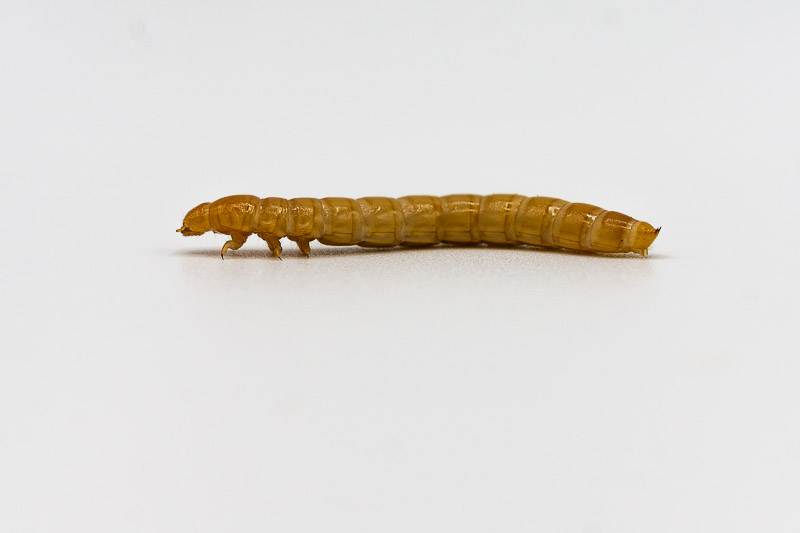
If you have an “escape proof” bowl, it may be fine to leave a few mealworms so your leopard gecko can find food if it sneaks out when you’re not around. Some bowls (like this one on Amazon) have rims on them so insects cannot crawl out.
Make sure to count how many insects you put in so you can gauge how much your leopard gecko is eating.
Have a hide available on each side of the enclosure
As much as we love our leopard geckos, we’ve got to admit they are not at the top of the food chain. Leopard geckos are often preyed upon by other animals. They need a hiding place to feel safe and secure.
Not only do leopard geckos need somewhere to hide, they need multiple hides. At minimum you should set up two hides; one on the warm side of the tank and one on the cool side. This way your leopard gecko has shelter and can choose which temperature area feels most comfortable.
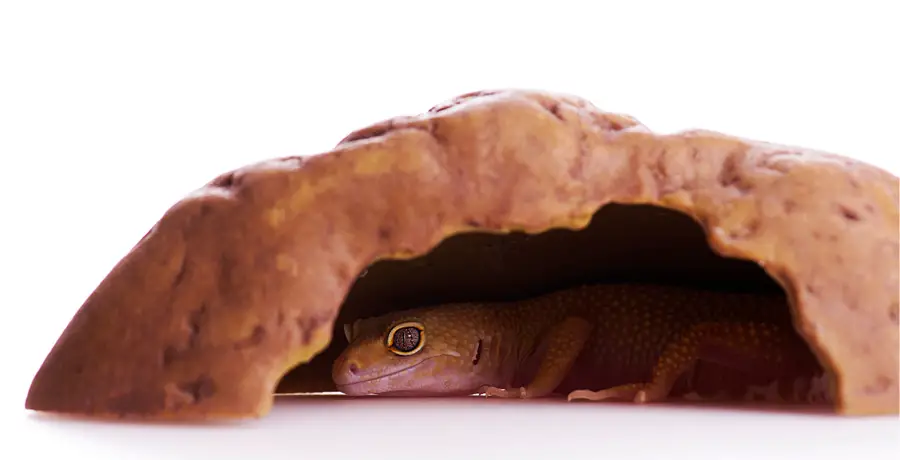
Don’t be surprised if your leopard gecko hides
It’s natural for any animal to seek shelter and security, especially when it’s uncertain and in a new environment. Your gecko will probably crawl into one of the hides and remain there until it calms down and feels secure enough to explore its surroundings.
Keep in mind that leopard geckos will sleep most of the day. They are typically most active around dusk and dawn, and may be out and about at night. If your gecko hangs out in its hide all day, that is perfectly natural.
Be patient, and give it time. Let it feel safe and secure as you build up trust.
Make sure you have the temperatures correct
Also make sure you do have a temperature difference with a warm side and cool side of the enclosure. Your gecko is endothermic (cold-blooded), meaning it depends on its environment to regulate its body heat.
Shoot for an ambient air temperature of about 90 °F (32 °C), on the warm side and abound 80 °F (27 °C) on the cool side. You don’t have to get it exact, though want to make sure your gecko is comfortable and has a choice of temperature. If the temperature dips into the 70’s at night, that would be natural and still comfortable for your gecko.
Wrap Up: How long does it take for a new leopard gecko to settle in?
The more you can do to make your leopard gecko feel safe and secure, the sooner it’s likely to settle in. Don’t feel discouraged if your leopard gecko take a little longer to feel at home. Each animal is different.
The key is to be patient, don’t spook it, and make sure you’re providing for its basic needs. Food, shelter, and proper temperature are key to making a leopard gecko comfortable.
Make sure you have everything you need for your leopard gecko habitat and visit our HABITAT SETUP Page.

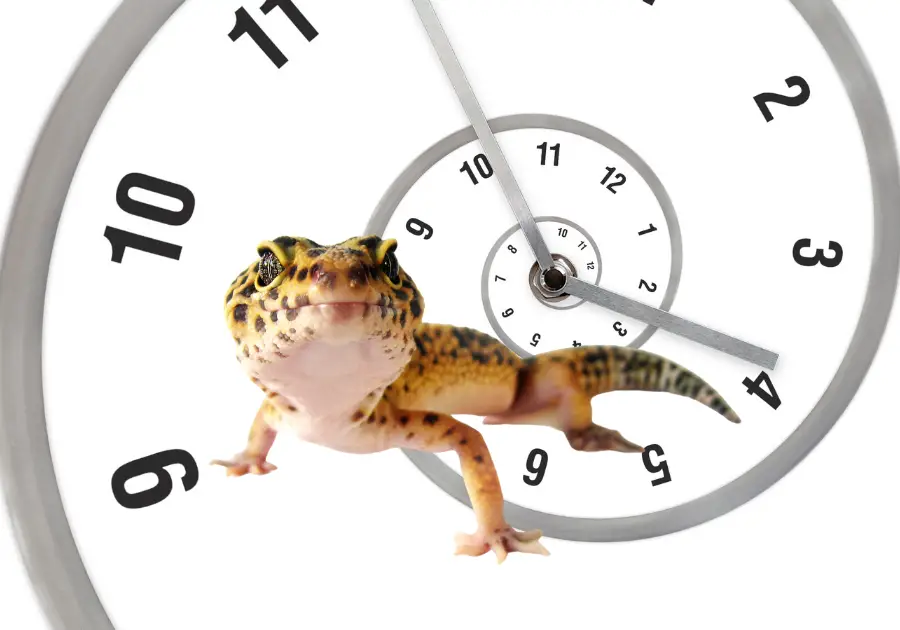
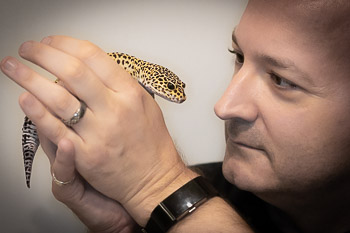
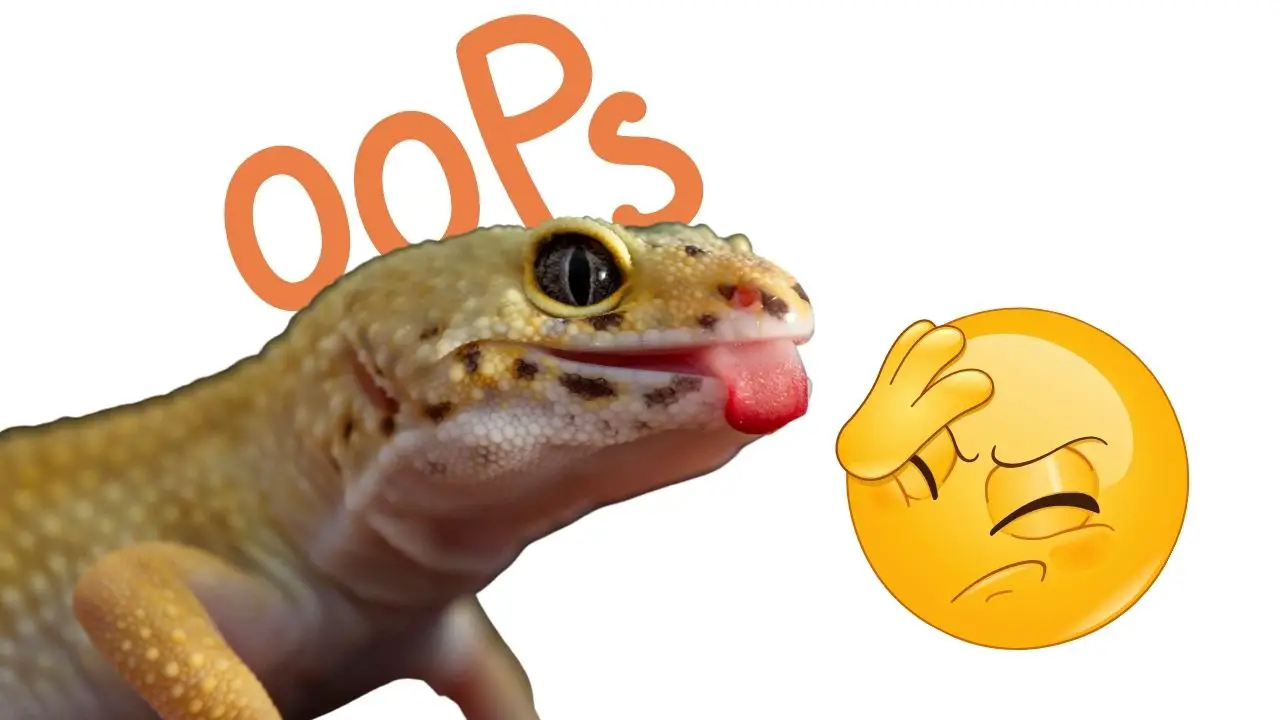
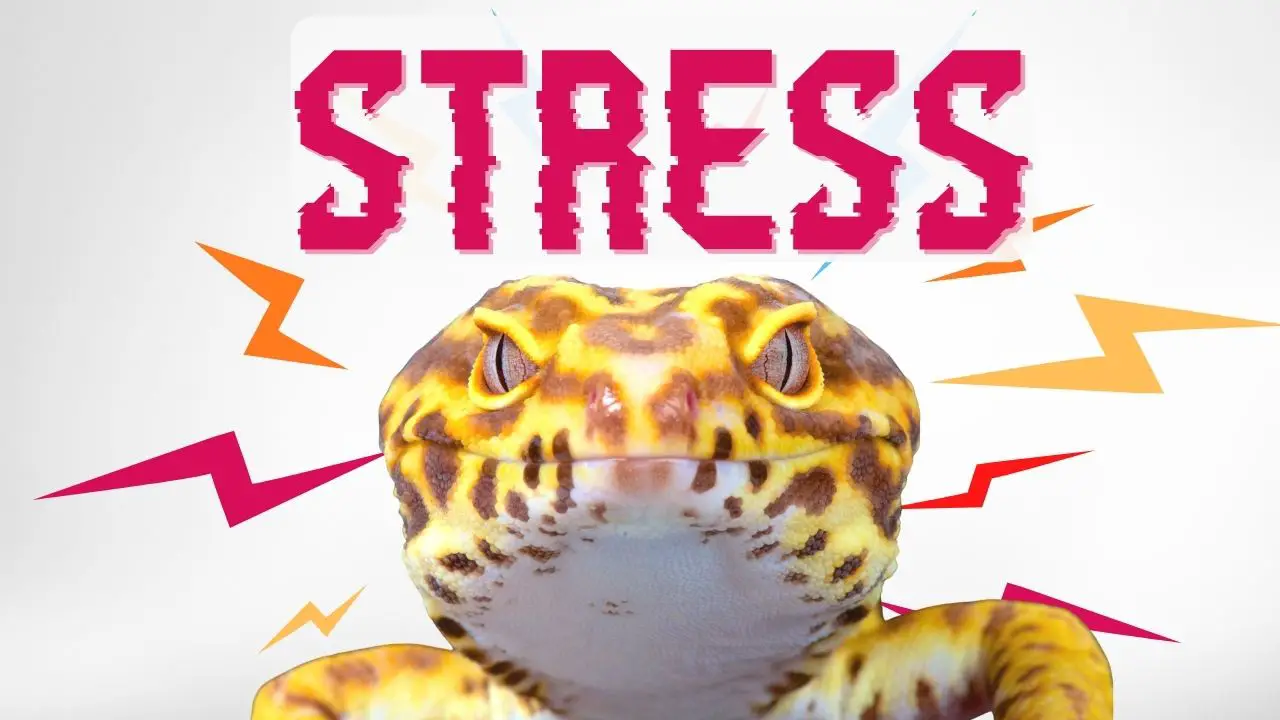
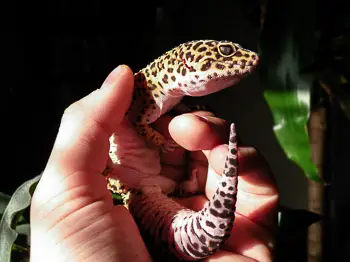
3 responses to “How long does it take for a new leopard gecko to settle in?”
Great blog, thank you !
Thanks so much for writing this. We have a new leo who has been with us almost 2 weeks. He still is very skittish and spends much of his days and nights inside a hide. We’ve tried introducing ourselves but he still seems very scared. Are there things we can do to help him get used to us without freaking him out too much?
Thanks!
Thanks! So glad that you’ve got a new leopard gecko! Patience and consistency are key getting your new gecko comfortable. If you’ve got your temperature dialed in, hides set up, and are sure it’s eating, then it’s a matter of making it feel safe. Make sure you’re not disturbing it during the day when it would/should be sleeping. Open and close your tank or vivarium so it can get used to the sound and not be startled by it. Start by putting your hand in the enclosure for a few minutes at a time every day. Try to make sure your gecko knows you’re there before surprising it. It’s best if you can let it climb onto your hand, though you can gently scoop it up from the side to pick it up. Make sure you’re supporting its whole body, and if it tries to avoid being picked up, don’t chase it. As with most pets, it takes some time. You can check out our post on handling tips for some more ideas.